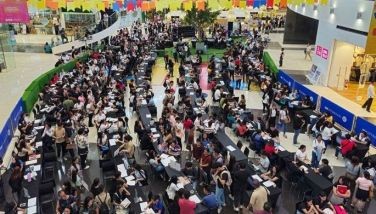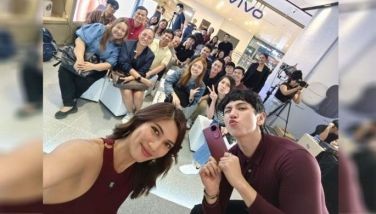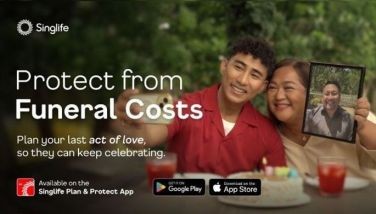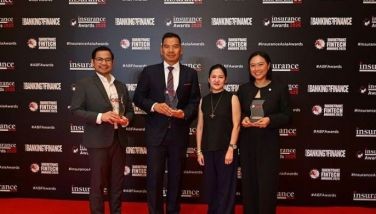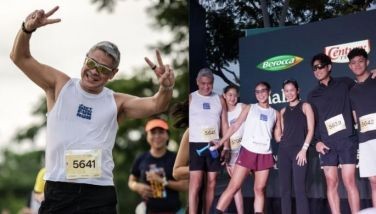Fil-Viet friendship in war and at sea


THE FRIENDSHIP between Vietnamese and Filipinos goes a long way, in war and at sea, their paths crossing at times as they struggle in their respective ways to find a more comfortable life free from foreign dictation.
When news reached us that 22 Filipino fishermen thrown off their sinking boat near Recto Bank off Palawan after it was hit around midnight of June 9 and abandoned by a Chinese vessel, I told myself “Talagang mahal tayo ng mga Vietnamese” (They truly love us Filipinos!).
Only three magic words – Vietnam! Philippines! Friends! – were exchanged to prompt a quick rescue of, first the two Filipinos who paddled five miles to the Vietnamese boat guided by its lights, and later the 20 other Filipino crew clinging for hours to floating debris.
Their wooden boat, puny compared to the steel-hulled Chinese vessel that rammed it, had its stern with its rudder smashed, causing it to sink as the aggressor ship escaped in the darkness.
Let me interrupt for a while the line I am developing that Vietnamese have an affinity to Filipinos traceable to the early 1960s. Before my memory fails me, let me recall my coverage in what was then South Vietnam before Saigon, now Ho Chi Minh City, fell to the communist Viet Congs.
I had my first immersion with Vietnamese when I covered the 1967 election of then South Korea, four years after the assassination of President Ngo Dinh Diem followed by a succession of military types running the country and much religious activism accented by the protest immolation of Buddhist monks.
Aside from observing the historic election, I was fascinated by the way of life under siege in Saigon and the villages reached by flat boats where a visitor from Manila would notice the ingeniously installed outboard motor that could be tilted up while running in water that was not deep enough.
Ignoring the Frenchy pretensions of the capital city, I opted to experience eating with the common folk in their equivalent of our carinderias, and riding their pedicabs where one sat in front as in the shovel of a payloader feeding you into crisscrossing traffic.
There was the ubiquitous “Open Arms” slogan (presumably addressed to dissidents and Viet Cong sympathizers) which I believed was part of a campaign cooked up by the usual suspect, the US Central Intelligence Agency.
One big help for this newspaperman let loose in a country in the middle of a war was my Press ID card issued by the US MACV which enabled me to attend briefings, talk with US troops and board military aircraft with the GIs as an accredited war correspondent.
Using that ID, I boarded a military plane at the Tan Son Nhut air base to rush to Tay Ninh province when I heard that more Filipino troops, reconstituted into an engineering battalion as part of the Philippine Civic Action Group (Philcag), were to arrive at their camp near the Cambodian border. Supposed to be non-combatants, they were to clear forested areas to make room for refugees, build roads and bridges, and conduct medical missions.
Filipinos I chatted with at the Caravelle hotel in Saigon had this apocryphal story that the Philcag troops were not attacked by the Viet Cong, who before they shelled or engaged in a mortar barrage reportedly advised the Filipinos to keep low so as not to be inadvertently hit.
My guess is that even before the Philcag units started arriving in 1966 as a token contribution to the US campaign after the French debacle at Dien Bien Phu, Filipinos had won the hearts of many rural Vietnamese through the Philippine Jaycees’ “Operation Brotherhood” of medical and relief missions.
The OB mission helped the Red Cross and similar groups meet the needs of thousands of refugees and wounded civilians flocking from the countryside to Saigon and Cholon. In the 1950s, Vietnam did not have enough medical professionals, a lack that OB helped fill. The mission created a good impression of Filipinos among Vietnamese.
• Jottings on my Reporter’s Notebook
WE reporters then were using manual typewriters and landline phones and nothing else for out-of-town coverage. There were no cellphones, laptops, digital cameras, fax machines or internet.
With notebook and pad paper, ballpen and a small camera (and rolls of Kodak film), and some soda crackers, I went to the Tan Son Nyut air base to look for a military plane to hitch a ride on to Tay Ninh before the Filipino contingent arrived.
I was not assigned by my editor Jose Luna Castro to cover Philcag, but I knew the posting of Filipino troops in that war-torn country was more interesting to our readers back home than the Vietnamese election whose results were as predictable as our poll surveys these days in Manila.
I scribbled my Tay Ninh-datelined story on pad paper, stuffed it in a big envelope with my rolls of exposed film and addressed the package to my friend Willy Jurado, then MIA (Manila International Airport) general manager, to whom I wrote a separate note to kindly pass on the materials to the Manila Times office in Sta. Cruz, Manila. (Willy delivered.)
But first, I had to find a military plane in Tay Ninh to ferry me back to Tan Son Nhut. Once at the airport, I looked for a commercial flight to Manila, talked to the pilot and asked him the favor of handing my envelope of press materials to the MIA manager.
* * *
NOTA BENE: Postscripts are archived at manilamail.com. Author is on Twitter as @FDPascual. Email feedback to fdp333@yahoo.com
- Latest
- Trending







